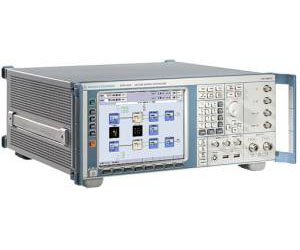Noise Generators
Buy RF Noise Generators – HP Signal Generators

A Noise generator is a circuit that produces electrical noise (i.e., a random signal). Noise generators are used to test signals for measuring noise figure, frequency response, and other parameters. Noise generators are also used for generating random numbers.
Shop For Noise Generators
Noise Generators have been a leading provider of RF & Microwave noise generating equipment used in commercial & military applications since for years. Noise generators provide noise diodes, built-in-test modules (BITE), calibrated noise sources, jitter sources, cryogenic noise standards, and computer controlled instruments that provide either Precision C/N, or broad band white Gaussian noise. There are several noise generation methods. For example, heated resistors, temperature-limited vacuum diodes, zener diodes, and gas discharge tubes. A source that can be switched on and off (“gated”) is beneficial for some test methods.
We offer high power broad band noise to interfere with communication signals, and instruments that gradually change SNR using Gaussian, high crest factor noise to determine the robustness of a receiver. Thermal noise can be a fundamental standard. A resistor at a certain temperature has a thermal noise associated with it. A noise generator might have two resistors at different temperatures and switch between the two resistors. The resulting output power is low.
One common noise source was a thermally-limited (saturated-emission) hot-cathode vacuum tube diode. These sources could serve as white noise generators from a few kilohertz through UHF and were available in normal radio tube glass envelopes. Flicker (1/f) noise limited application at lower frequencies; electron transit time limited application at higher frequencies. The basic design was a diode vacuum tube with a heated filament. The temperature of the filament sets the anode (plate) current that determines the shot noise. The anode voltage is set large enough to collect all the electrons emitted by the filament. If the plate voltage were too low, then there would be space charge near the filament that would affect the noise output. For a calibrated generator, care must be taken so that the shot noise dominates the thermal noise of the tube’s plate resistance and other circuit elements.
Shop For Noise Generators
For higher power output noise generators, amplification is needed. For broadband noise generators, that amplification can be difficult to achieve. One method uses avalanche multiplication within the same barrier generating the noise. In an avalanche, one carrier collides with other atoms and knocks free new carriers. The result is that for each carrier that starts across a barrier, several carriers synchronously arrive. The result is a wide-bandwidth high-power source. Conventional diodes can be used in breakdown.
